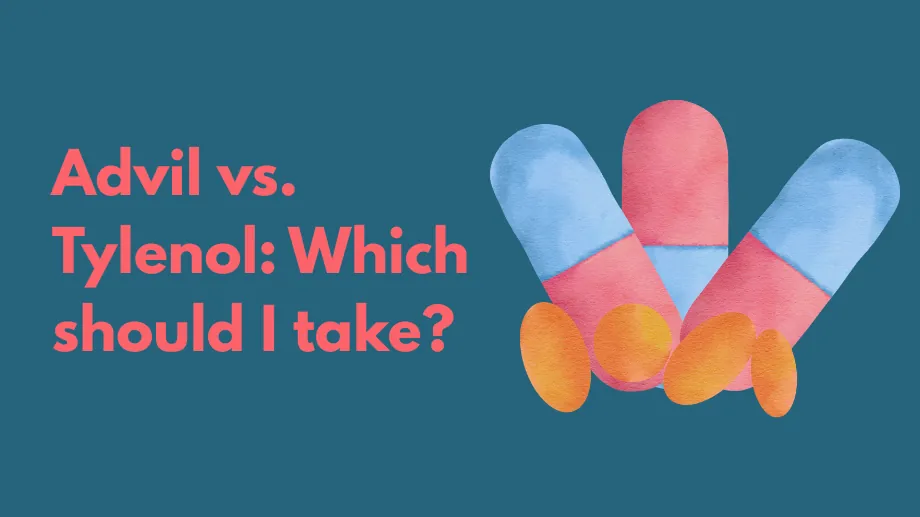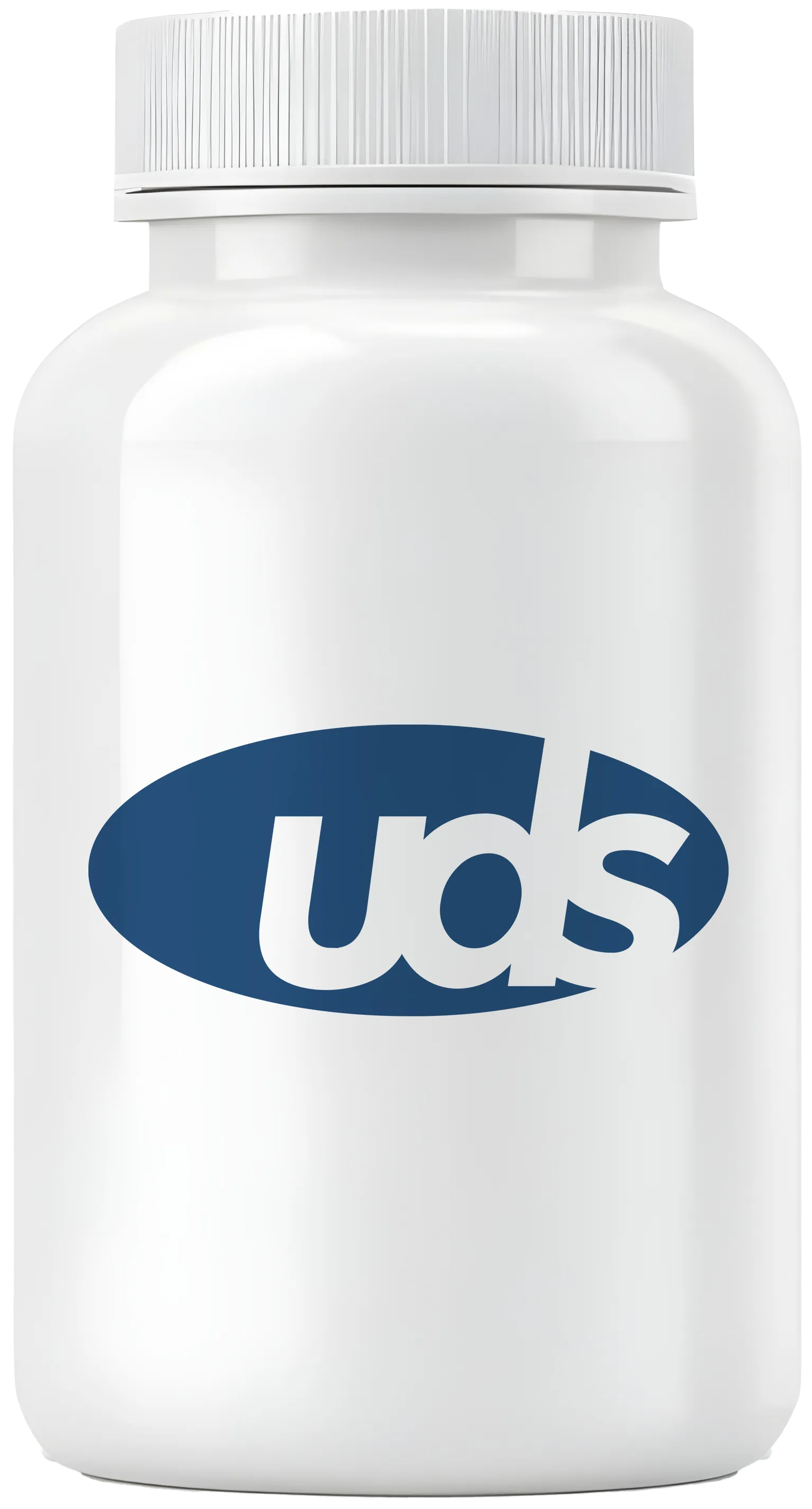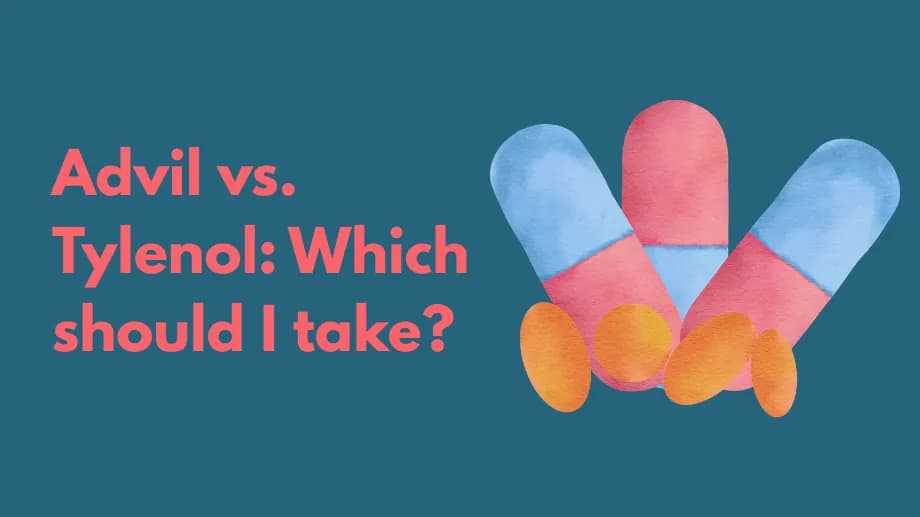Advil vs. Tylenol: Which should I take?

Choosing the right over-the-counter pain reliever can be challenging. This guide will help you understand the differences between Advil and Tylenol and decide which might be better for your needs.
Understanding Tylenol
Tylenol, known generically as acetaminophen, is used to treat mild to moderate pain and reduce fever. It’s available in various strengths and is known for its effectiveness in pain relief and fever reduction.
Understanding Advil
Advil, which contains the active ingredient ibuprofen, belongs to a class of drugs known as NSAIDs. It not only reduces pain and fever but also addresses inflammation.
How Tylenol Works
Tylenol operates by inhibiting the COX pathway in the central nervous system, reducing the production of prostaglandins, which cause pain and fever.
How Advil Works
Advil also affects the COX pathway but blocks both COX-1 and COX-2 enzymes, which are involved in pain, fever, and inflammation.
Side Effects of Tylenol
While generally safe, Tylenol can cause side effects such as nausea and liver damage if taken in high doses.
Side Effects of Advil
Advil can cause stomach pain, heartburn, and potentially more serious conditions such as ulcers, kidney damage, and increased risk of heart attack and stroke.
Shop Medications
Who Should Avoid Tylenol?
Those with severe liver disease or who consume high amounts of alcohol should avoid Tylenol.
Who Should Avoid Advil?
Advil should be avoided by those with allergies to NSAIDs, current or recent heart surgery patients, and those with stomach ulcers or bleeding problems.
When to Take Tylenol or Advil
Choose Tylenol for general pain relief and fever reduction. Opt for Advil if you need additional anti-inflammatory effects for conditions like arthritis.
Proper Dosage
It is crucial to adhere to recommended dosages to avoid serious side effects. Tylenol should not exceed 4,000 mg per day, while Advil’s maximum is lower, especially for over-the-counter use.
Can You Take Advil and Tylenol Together?
Yes, they can be taken together by spacing them a few hours apart to avoid exceeding the daily limits of either medication.
Sources
- StatPearls Publishing
- National Institute of Diabetes and Digestive and Kidney Diseases
- DailyMed

